Types of Bike Brakes Explained — Rim Brakes vs. Disc Brakes vs. V-Brakes
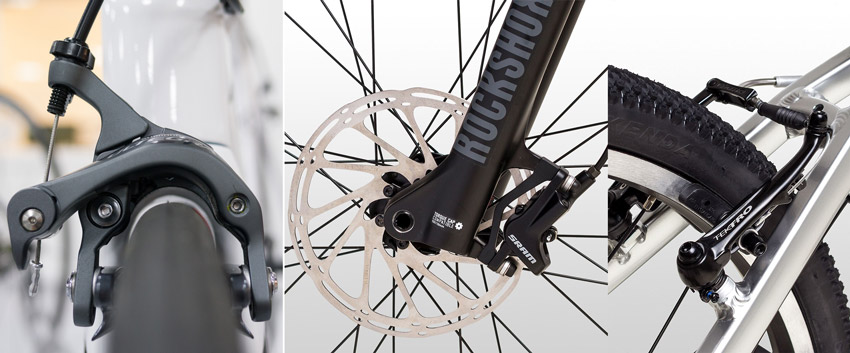
Bike brakes have been subject to constant innovation and development down the years, with manufacturers making incremental changes to all types of bike brakes in the hunt for a competitive edge.
For the first time, the answer to the question, “what type of brakes are best for bikes?” is more or less a consensus: the disc brake.
In almost all situations, disc brakes are favorable, but other types like rim and coaster brakes will continue in use as long as they are cheaper, lighter, and easier to maintain.
This article aims to explain how brakes work, the different types of bike brakes, and their strengths and weaknesses so you can make the right choice for your next bike.
How Do Brakes on a Bike Work?
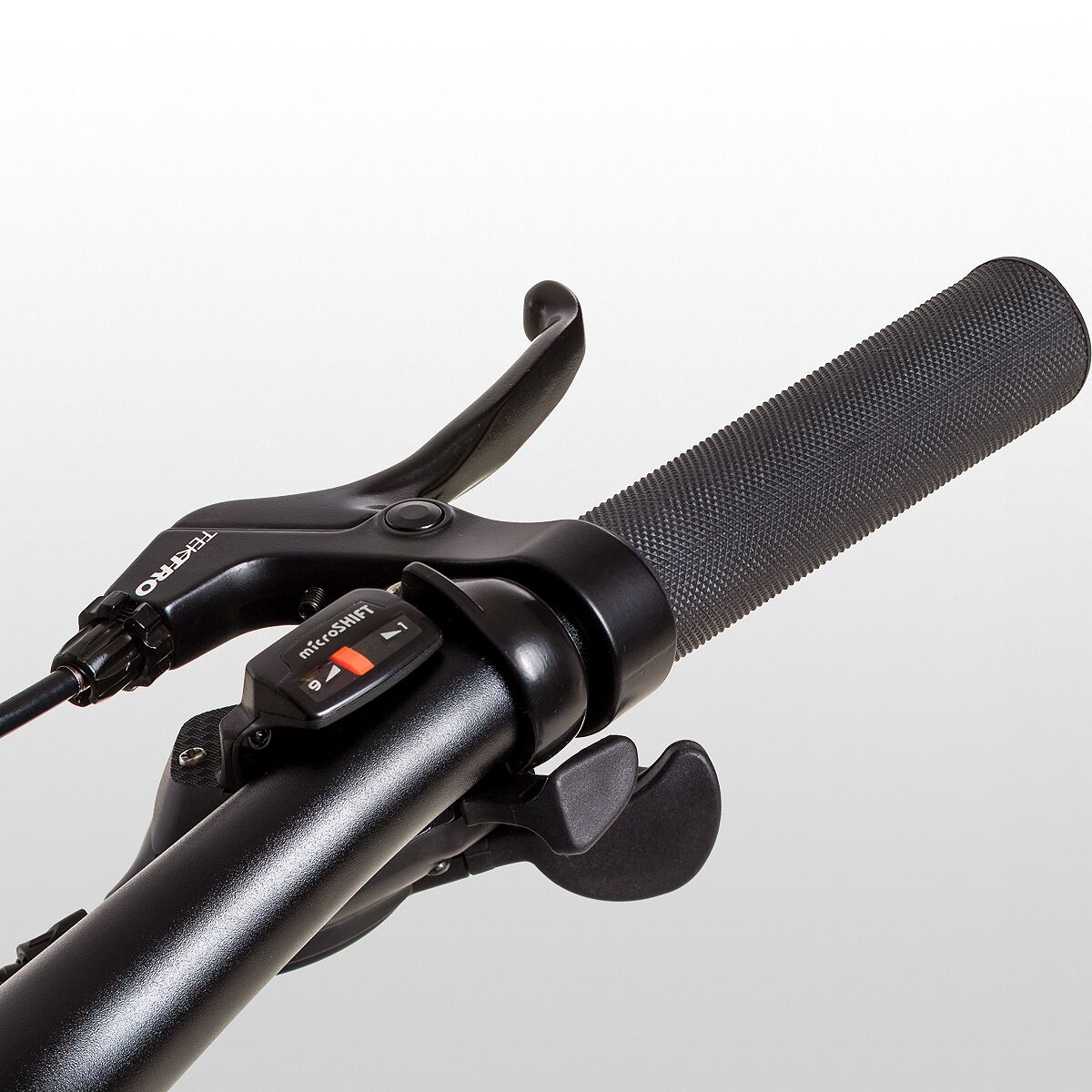
By pressing the brake lever, the rider pulls on the brake cable or pushes brake fluid (depending on the brake type) in order to slow down the bike.
All bicycle brake types use friction to slow down or prevent a bike’s movement. In modern brakes, braking pads generate friction by pressing on a braking surface (rim, rotor, or drum). All bicycle brakes share three components.
- One that allows the rider to activate the brakes – brake levers, pedals
- Another to communicate with the brake mechanism – hydraulic hose, cable, chain
- The braking mechanism – caliper, drum
For example, a rider pulls the brake levers on mechanical disc brakes, shortening the cable. Then, the cable activates the pistons within the brake caliper, which closes the brake pads onto the rotor.
Similarly, on hydraulic disc brakes, the brake lever moves a piston that compresses the fluid inside the system and pushes the calipers together, squeezing the rotor and slowing down the bike.
Types of Bike Brakes and How They Work
Many types of bicycle brakes have arisen and disappeared over the past two centuries since the bicycle’s invention. Over time, minor improvements to existing bike brake types have resulted in lighter mechanisms, more powerful braking, better modulation (control), and improved reliability.
The relatively new disc brake system is the latest major braking innovation, providing unparalleled performance in most metrics.
Disc Brakes
Bicycle disc brakes come in two designs, mechanical and hydraulic. The primary difference is how the brake lever communicates with the braking mechanism (actuation): a Bowen cable or a hydraulic hose.
Both hydraulic and mechanical systems use brake levers and a disc brake rotor attached to the wheel. A caliper mechanism that contains brake pads sits over this rotor and is activated mechanically or hydraulically.
All You Need to Know About Disc Brakes for Bikes
There are many advantages of using a rotor as the braking surface instead of the wheel rim. These include improved wet weather performance, more power, and better control (modulation). The trade-offs compared to rim brakes are discs are heavier, more expensive, and harder to maintain.
Mechanical Disc Brakes
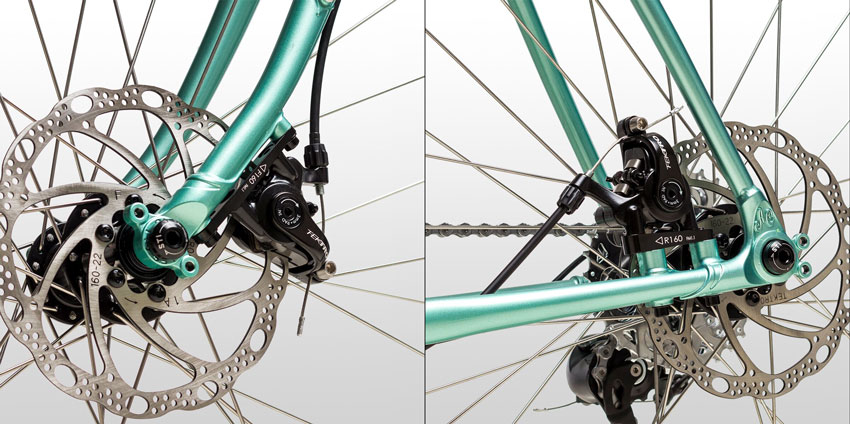
Mechanical disc brakes are also called ‘cable-actuated’ because they use a steel cable to connect the caliper and the lever, much like rim brakes.
Mechanical discs are ‘cable-actuated,’ meaning they operate using standard braking cables. The cable that connects the brake lever to the caliper pulls to activate the pistons within the caliper. The pistons have brake pads on the tips, which squeeze the rotor to slow the bike.
Mechanical disc brakes offer a significant improvement over rim brakes. However, they aren’t as efficient as hydraulic systems because the cable is susceptible to stretching and friction, which diminishes performance over time. Nonetheless, they are cheaper and easier to fix than hydraulic brakes.
Hydraulic Disc Brakes
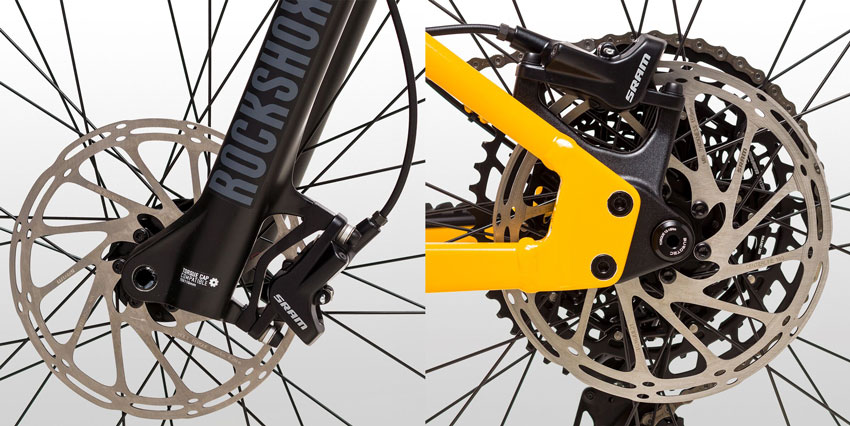
Hydraulic brakes have hoses filled with brake fluid that gets pushed by the brake levers and squeezes the calipers to slow down the bike.
Hydraulic brakes push hydraulic fluid through a closed container system which attaches to the brake caliper. When you pull the lever, fluid moves through the system to create the hydraulic pressure that activates the pistons in the caliper.
Hydraulic disc brakes are by far the most powerful type and offer the most modulation and control in tough conditions.
Using hydraulic fluid instead of a cable eliminates friction and the problem of stretching to achieve the most consistent, durable, and powerful braking performance. In addition, the only regular maintenance that hydraulic brakes require is bleeding the hydraulic fluid and replacing it with new, clean fluid. Conversely, mechanical discs require frequent adjustments to the cable to maintain performance.
Disc Brake Rotors

Different styles of Shimano and SRAM disc brake rotors.
We’ve seen that the method of brake actuation is consequential for braking performance and reliability. Likewise, the design quality, materials, and size of the disc brake rotors can have a massive impact on the performance of disc brakes.
Larger rotors provide more surface area for braking and thus more stopping power. In addition, the wider the rotor, the faster it dissipates heat. The trade-off, of course, is extra weight. Rotor sizes start at 140mm for road and cyclocross bikes and go up to 203mm for some e-bikes and downhill MTBs.
The rotors, like the wheel rim on rim brakes, experience a lot of friction, leading to heat buildup. The more your brakes work, the hotter the system gets. If a rotor gets too hot, it can start to warp, reducing braking efficiency.
Brake manufacturers have a few tricks to help mitigate this issue, including using wider diameter rotors, cooling fins, and multi-layer rotors with steel on the outsides and aluminum in the center to reduce weight and improve heat properties (insulation).
Disc brake rotors can also sometimes get contaminated and lead to squeaky noises when braking, which can be annoying and affect the braking performance and power.
Rim Brakes
Various types of bike brakes use the wheel’s rim as the braking surface, leading some to ask, ‘what is a rim brake?’.
Two rim brakes designs are still commonly used: calipers and v-brakes. Both will be familiar to most cyclists. Additionally, you have traditional cantilever brakes, which until recently were common on cyclocross bikes. However, the widespread use of discs has made them obsolete.
Until recent years, caliper rim brakes were the most common type found on even the best road bikes, with top-end models continuing to use them due to their lower weight. In fact, some pro riders still use rim brakes for particularly hilly races.
In addition to being lighter, rim brakes are cheaper and easier to maintain and repair. However, their wet weather performance is poor, and they generally provide less power and modulation than discs.
Caliper Brakes
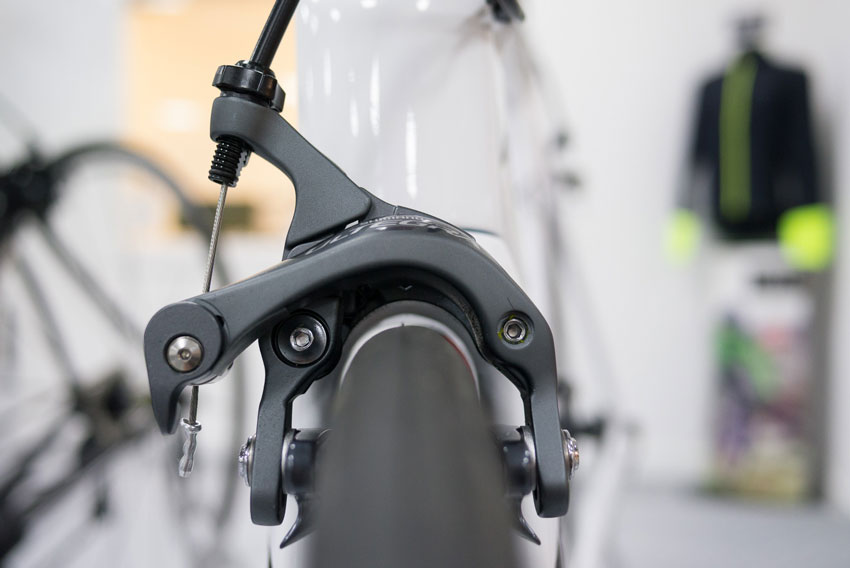
Dual-pivot Shimano Ultegra rim caliper brakes.
Calipers are the most common rim brakes, of which there are many designs. Caliper brakes attach to a bike’s fork and rear dropouts using a single mounting point. With brake pads attached, the caliper arms hug the rim and are drawn together by a cable. There are a variety of caliper designs and cable actuation methods.
- Single-pivot side-pull – Two curved arms pivot around a single point above the wheel. One arm is attached to the cable and the other to the cable housing. These were popular until dual-pivot was introduced in the ’80s and were particularly effective for narrow rims but poor for wide ones.
- Dual-pivot side-pull – Like single-pivot calipers, one arm pivots from the center but the other pivots at the side. This design offers more leverage than the single-pivot, meaning more stopping power. As a result, these brakes quickly replaced single-pivot brakes on road bikes and still remain the choice for road manufacturers. There is another variation of these brakes called direct-mount calipers. These use a mount point for each arm instead of a single mount point, providing even more power and better tire clearance.
- Center-pull – These brakes use symmetrical arms mounted to the frame. The brake lever connects to a pulley with a straddle cable that runs to each arm separately. When you pull the brakes, the pulley lifts to pull each arm simultaneously. These brakes offer excellent power and less flex under strain but never became widely used.
Cantilever Brakes
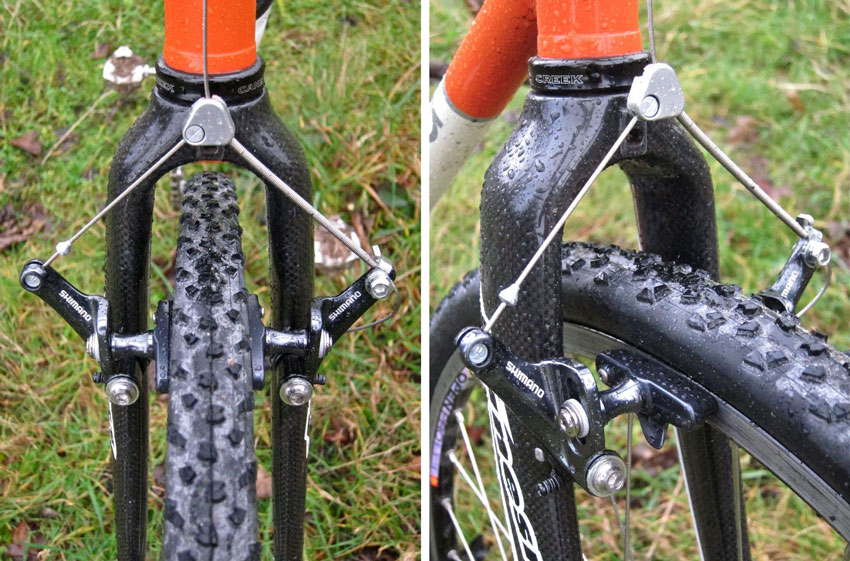
Cantilever brakes used to be a popular choice for old mountain bikes and CX bikes, but have recently been replaced by disc brakes. (Image source: road.cc)
Cantilever brakes use two separate caliper arms fixed on either side of the fork and seatstays. The arms point out and are joined by a straddle cable that connects to the brake cable. When you pull the brakes, the straddle cable pulls the two arms simultaneously, closing the pads onto the rim.
Cantilevers offer excellent braking power and tire clearance. However, they are more challenging to set up, aerodynamically poor, and prone to damage as they protrude from the frame.
V-Brakes (Linear-Pull)
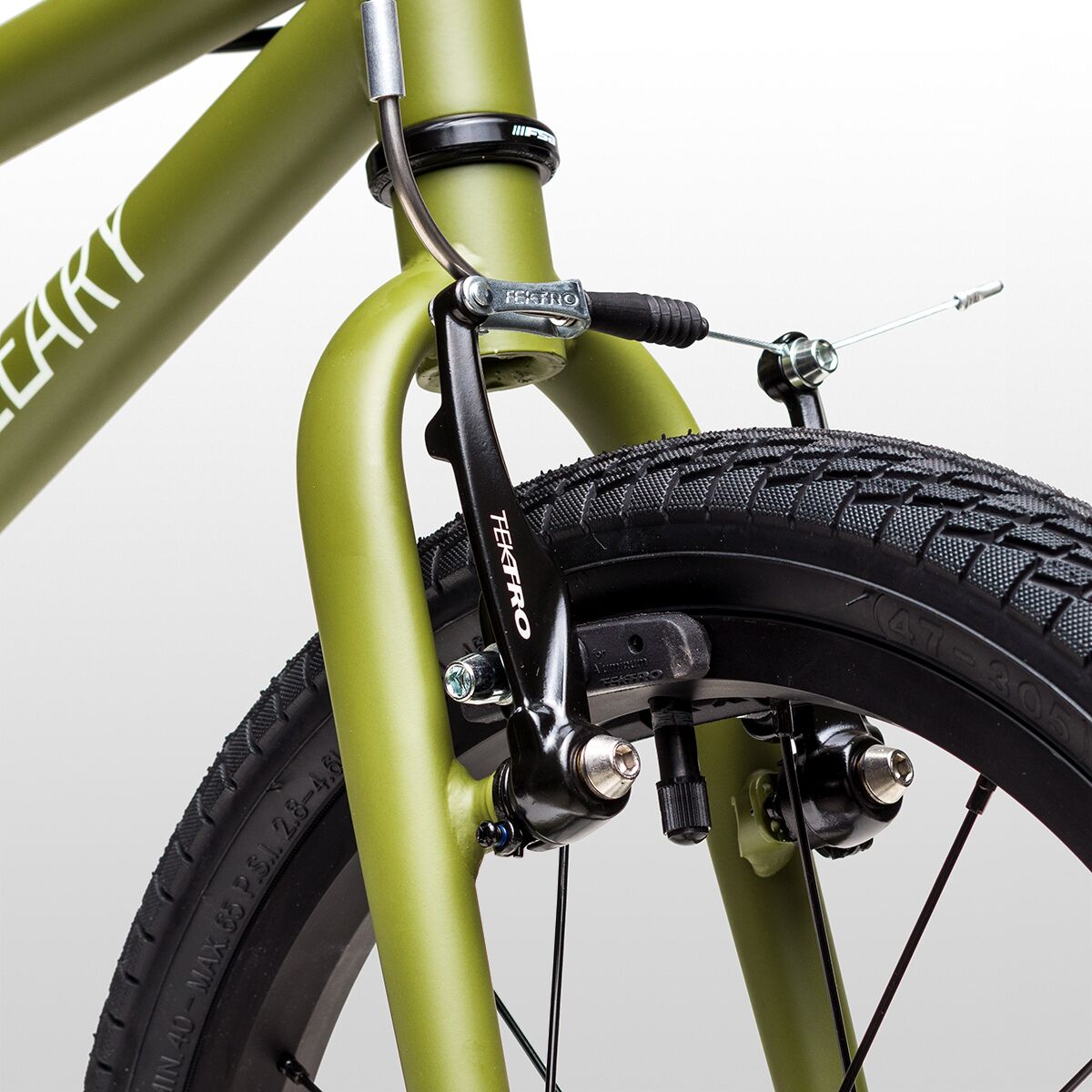
V-brakes are still one of the most popular types of brakes on kids’ bikes and affordable MTB and hybrid bikes.
V-brakes (direct-pull, linear-pull brakes) were an upgrade to the traditional cantilever, eliminating the central straddle cable and, instead, just using the brake cable and cable housing to pull the caliper arms together.
V-brakes are affordable, easy to maintain, and offer decent braking power, which is why they are still found on many entry-level bikes.
The arms of a v-brake are bolted individually to the seatstays and fork. On v-brakes, one arm attaches to the cable housing, and the opposite arm clamps to the brake cable, which runs directly across out of the housing. The brake cable is drawn into the housing upon pulling the brake levers, bringing the arms together, and clamping the pads on the rim.
V-brakes are some of the most powerful rim brake designs and were widely used on mountain bikes and hybrids before the introduction of discs. Today, you find them primarily on entry-level hybrids.
Coaster Brakes
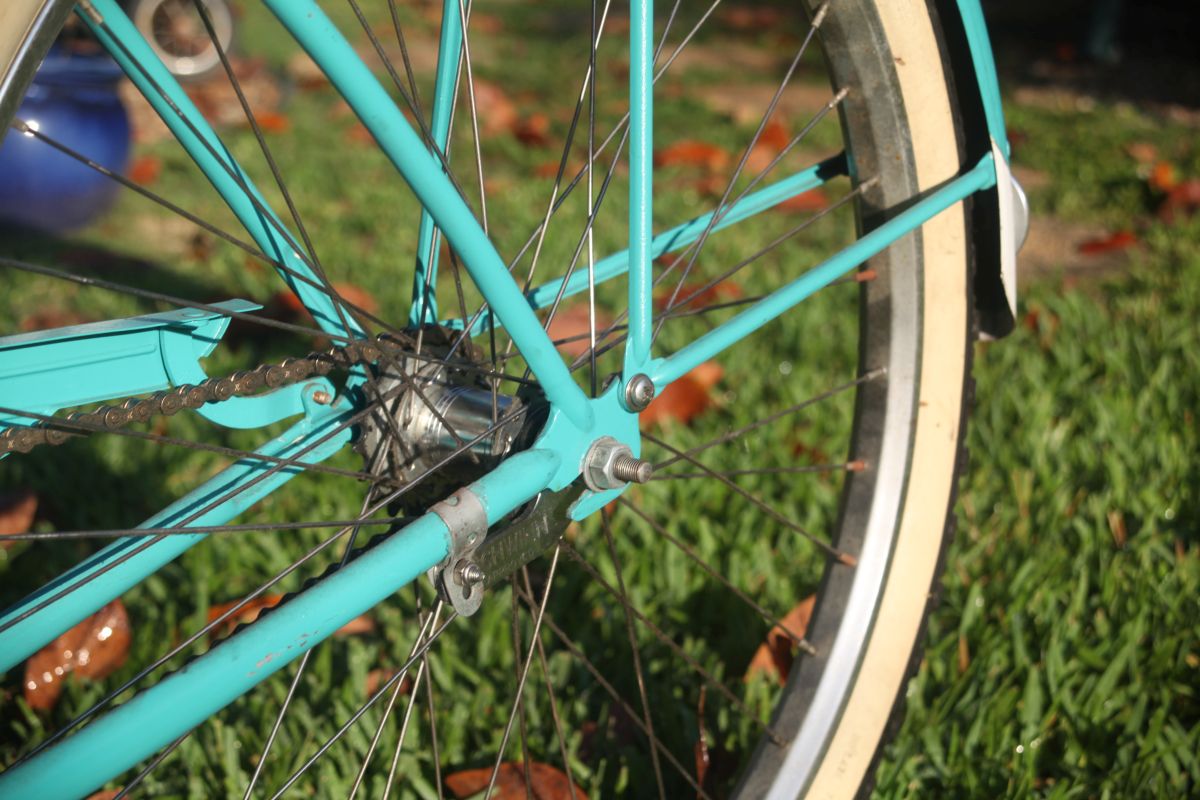
Coaster brakes are not as powerful or reliable as other types, but they can still be found on affordable single-speed city and cruiser bikes.
Another brake still used today is the coaster, which you find on single-speed and kids’ bikes. The resurgence in the popularity of fixies in recent years means the coaster is not entirely obsolete, though fixies don’t technically use a coaster brake but brute force.
Coaster bike brakes work using a brake housed in the rear wheel’s hub. This hub connects to the chain and crankset so that when you pedal backward, there are two pads inside that push outward against a braking surface.
Because coaster brakes are inside the hub, they are not susceptible to poor weather conditions and are very low-maintenance. However, they are hard to modulate, heavy, and prone to locking up.
Disc Brakes vs. Rim Brakes: Why are Disc Brakes Better?
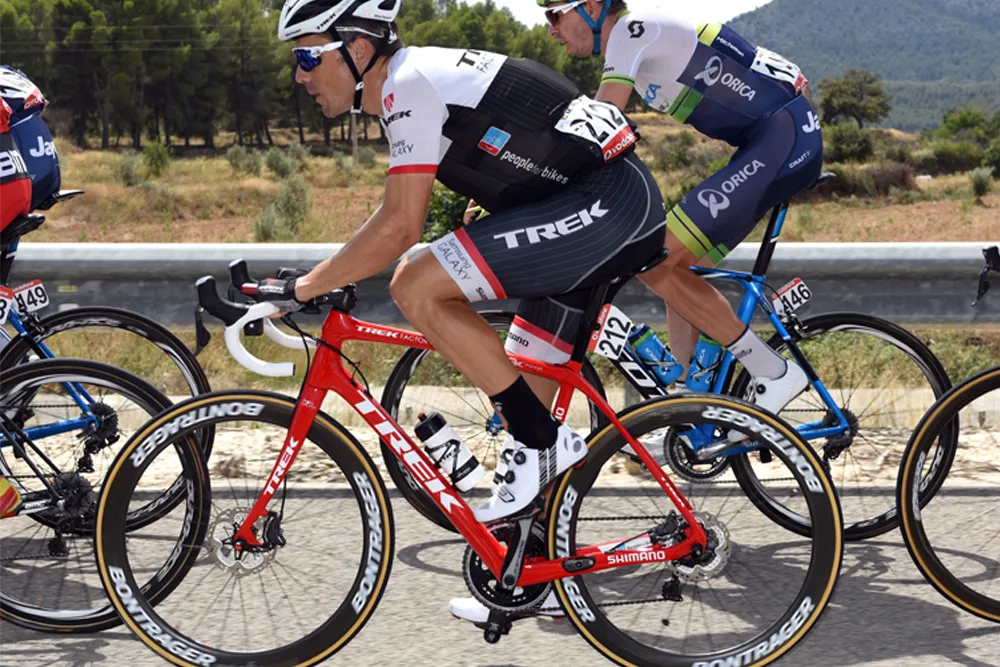
Disc brakes have become the go-to choice even in the road racing pro peloton. (Image source: cyclingweekly.com)
Disc brakes, especially hydraulic ones, solve many problems that have long plagued rim brake manufacturers and engineers. Traits like wet weather performance, power, and wheel clearance were constantly being balanced, with compromises made to one for the sake of the other. The following design features contribute to the superiority of discs.
- Tire clearance is no longer an issue because the braking surface is placed at the wheel hub, meaning the brake caliper isn’t limited by the need to fit around the rim/tire.
- By using a designated rotor for braking, disc brakes can use more aggressive brake pads, creating more grip in all conditions. Rim brakes must use rubber to avoid wearing down the lightweight alloy rim.
- The rotor doesn’t go as close to the ground as the rim, which helps keep the braking surface cleaner and dryer to maintain braking performance.
- Disc brakes can generate tremendous clamping force as the pads are much closer to the braking surface than rim brakes, providing more leverage.
Disc brakes for bikes are slowly taking hold across each cycling discipline simply because they’re better. In late 2021, the Ineos Grenadiers became the last professional road racing team to switch to discs. Before that, mountain biking, gravel biking, and cyclocross changed over. As of 2024, very few bikes still have rim brakes outside the entry-level price range.
How to Choose the Best Brakes for a Bike
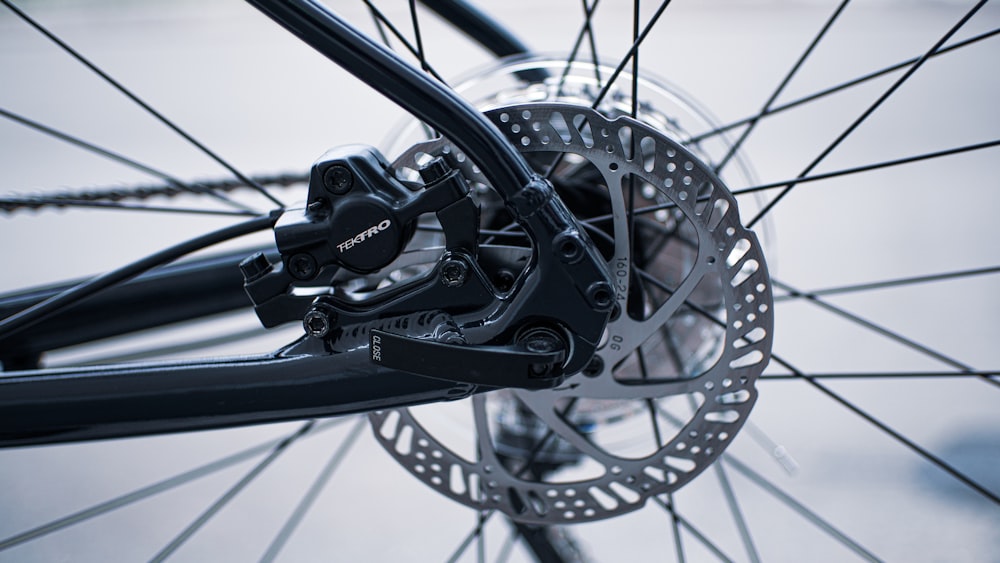
Hydraulic disc brakes are proving to be the best and most reliable type of brakes across the board.
Choosing the best brakes for your riding style is relatively straightforward. The most important considerations are whether you ride on or off-road, in wet weather, or if you ride an e-bike. Thankfully, disc technology is becoming more and more common on bikes at all prices, meaning it’s not a decision you will have to make for too long.
If possible, hydraulic disc brakes should always be your first choice, unless you’re a bicycle traveler, in which case v-brakes or mechanical disc brakes are a better option.
Firstly, we recommend picking a bike with disc brakes for off-road riding (mountain, gravel, and cyclocross). The technical nature of trail riding and the extra mud, dirt, and debris that could affect braking performance while riding off-road give a distinct advantage to discs, especially as weight is less of an issue. Additionally, all-weather commuting, electric biking, and performance road biking will benefit from the extra control, power, and reliability of disc brakes.
For all other riding styles, such as city cruisers, relaxed leisure riders, and even touring bikes, well-maintained rim brakes are perfectly adequate and will be cheaper, easier to service, and lighter.

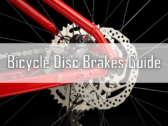


Thanks for the post
Thanks, I’ve been looking for this for a long time
Disc brakes suck in the winter. Frost builds up in them and they freeze and stick. Center pull brakes are the best I ever used. Most people are not professional racers and need brakes that work year round in all conditions. Bike mfrs don’t seem to understand that.
Edit: Actually, I meant cantilever brakes. We used to call them center pull brakes (as opposed to side pull). They are simple, easy to maintain, effective.
Cantilever brakes are definitely very straightforward and easy to maintain. No wonder they had been used for CX racing until recently.
However, from my experience, disc brakes perform really well even in very cold temperatures. Your body will usually start performing worse much sooner than the brakes in such conditions.
The only real concern for me with disc brakes in winter is riding through some very deep snow, in which case snow and ice may build up inside the calipers and around the discs. But few riders do that kind of riding and a few pumps of the brake will usually clear everything out.